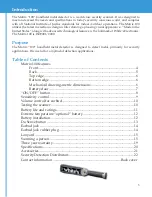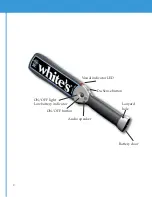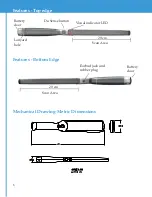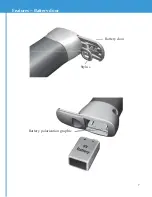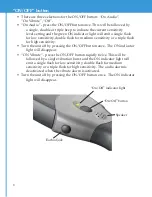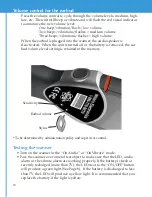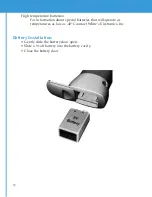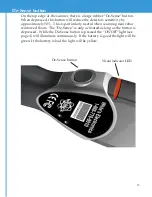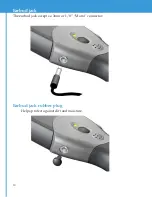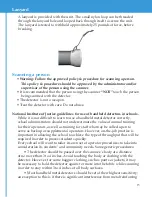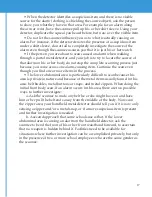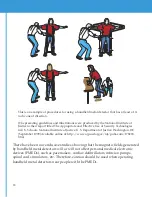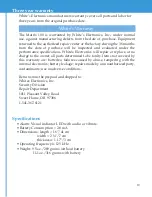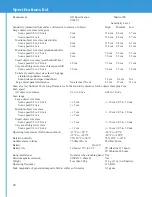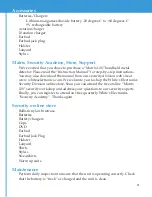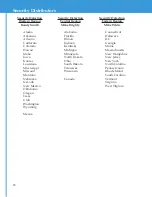
16
in a floor or other nearby material that could cause constant alarms unless the
detector’s sensitivity is turned down.
• The body scan should be performed each time in the same pattern so
that the operator always knows what parts of the body still need scanning. A
sample routine is illustrated on page 18.
1. Ask the scannee to place all carried items, plus any caps or headgear on
a table (procedures for manual search of baggage are not covered in this text).
The scannee should stand with his or her feet about 18 inches apart, facing
away from the table and about 2 feet in front of it. Footprints outlined on the
floor or drawn on a mat can greatly help position the scannee properly. Ask the
scannee to hold his or her arms out to the sides, parallel to the floor.
2. Quickly run the handheld detector across some piece of conductive
material on your own body, such as a belt buckle. The ensuing squeal of the
detector will assure you that the scanner is still operating properly.
3. Start at the top of one shoulder of the scannee. With the paddle of the
detector held horizontally and parallel to the front of the body, sweep down
one side of the front of the torso, down the leg to the ankle, then move to the
other ankle and sweep back up the front of this opposite leg and torso, ending
with the opposite shoulder. (If a particular detector’s detection paddle is less
than half the width of the average body, or if a particular body is wider than
twice the width of the detection paddle, the pattern will have to be modified to
achieve adequate coverage).
4. Sweep the detector paddle over the outside top of the arm from the top
of the shoulder to the bottom of the wrist, then up the inside of the arm to the
armpit. Sweep down that side of the body to the ankle, then up the inside of
that leg and down the inside of the opposite leg, then back up the other leg
from the ankle to the underarm. Repeat the sweep of the inside and outside of
this arm. Note that it would be particularly important to avoid touching the
paddle up against the scannee’s body when scanning up and down between
the legs.
5. Ask the scannee to turn around. (Arms can be put down now). The
pattern used to scan the front of the body should now be repeated over the
back of the body.
6. Ask the scannee to grab the edge of the table for support, then to lift
one foot up in back of him or herself. Scan across the bottom of the shoe.
Repeat for the other foot. The operator should expect to hear a short squeal
from the detector when scanning the bottom of shoes or boots with steel
shanks or steel toes. Both shoes should cause equivalent squeals.
7. For the head area, start at the top of the forehead and scan
around the top of the head down to the back of the neck.
Содержание MATRIX 100
Страница 1: ...1 ...
Страница 2: ......
Страница 7: ...7 Features Battery door Battery door Stylus Battery polarization graphic ...
Страница 23: ......


